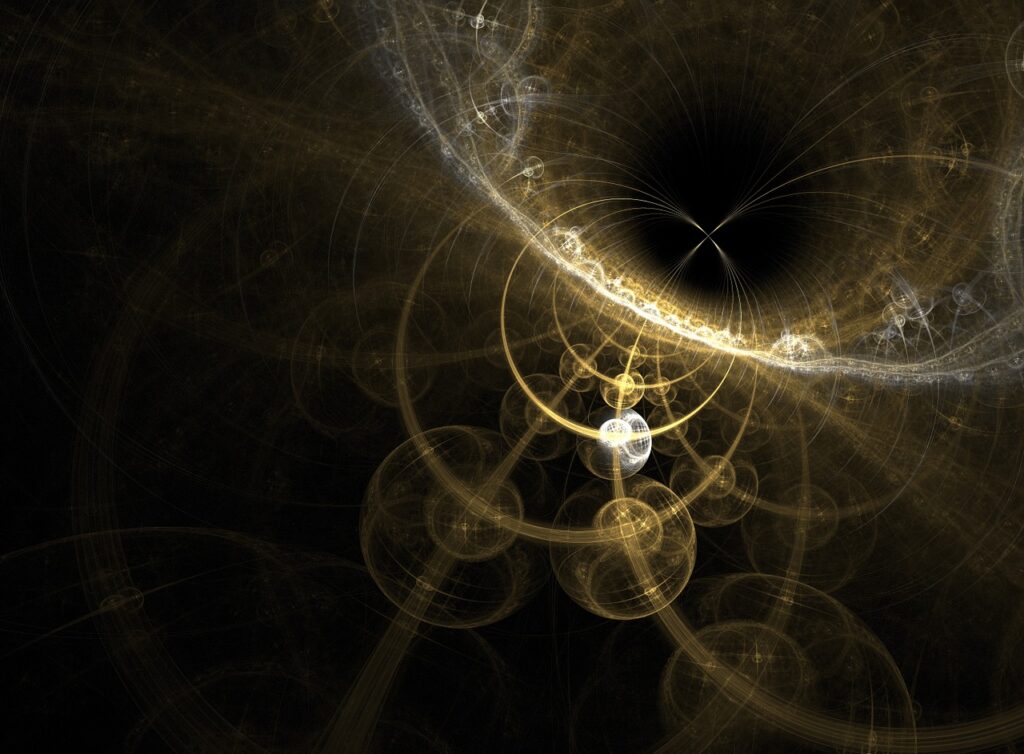Quantum gravity is one of the burning field in theoretical physics that tries to describe gravity according to the principles of quantum mechanics, and where quantum effects cannot be ignored, such as in the vicinity of black holes.
Our most comprehensive theory of gravity currently is General Relativity, that explains gravity as a natural result of the curvature of space-time. It is rather successful at large scales, such as planetary or larger dimensions.
At more day-to-day scales, it is usually approximated by a simpler model, Newtonian gravity.
However, at the smallest scales, much smaller than atoms, gravity is not satisfactorily understood. Quantum gravity is a hypothetical theory that can describe gravity, a fundamental force, at the smallest level.
Index
Why do We Need Quantum Gravity?
A reasonable question to ask is: Why do we need quantum gravity? Well, one simple reason is that General Relativity gives some results that seem “unphysical” in extreme conditions. One such result is the singularity at the centre of a black hole.
It basically represents infinite curvature of spacetime and goes against most realistic physics. Quantum gravity might get rid of the infinity, or might at least give a sound physical basis for it.

Another reason why physicists look for quantum gravity is simply this: we live in a quantum universe. In other words, the universe doesn’t exist like a continuous stream, it rather exists in bits and pieces, like a Lego building. At the smallest level, everything consists of chunks, be it particles, or fields (like the electromagnetic field). When seen from far enough, the individual blocks can’t be seen, giving a continuous image.
Gravity, in general relativity, does not involve chunks, at least not in the sense of other quantum theories. Compare this with quantum electrodynamics, which deals with electromagnetism. The smallest unit (like the single Lego block) here is the photon, which mediates the force. There has been no confirmation of an equivalent particle, the graviton, in the case of gravity.
The situation with gravity now can be compared to that of electromagnetism at the end of the 19th century. There was a successful classical (which usually means “continuous”) theory, but there was no mention of quantum effects.
Problems That Quantum Gravity Faces
A problem that turns up when we extend quantum theories to gravity is that of renormalization.
Loosely speaking, quantum field theories of the electromagnetic and weak force have a property called renormalization that lets one handle cumbersome infinities with a finite number of corrections.
The same logic does not work for quantum gravity: trying to handle the infinities ends up giving us an infinite number of corrections, which is hardly better.
Another issue is that General Relativity is built into curved spacetime, while traditional quantum field theories are described in flat spacetime. Extending quantum field theories, not even including gravity, to curved spacetime is a challenge in its own regard. This further complicates it.
A strong experimental problem is the weakness of gravity, the weakest of the fundamental forces. This, taken along with the small scale of quantum phenomena, means that enormous amounts of energy and very sensitive equipment will be needed for observation. Hence, testing theories is very difficult in the near future.
Possible Theories

While there is no successful theory that explains gravity in a truly quantum sense, there are quite a few that show promise.
One of the most popular is String Theory, which explains fundamental particles as tiny strings, instead of points. The behaviour of the strings gives rise to other phenomena, one of which is the existence of gravitons.
However, it doesn’t (yet) fully address how spacetime could be quantized.
On the other hand, there is loop quantum gravity, LQG, which treats spacetime as made of basic building blocks. This is a helpful step in the direction of quantization. It still has gaps to fill in, however.
Conclusion
This concept could be a bridging theory between the very large and very small sides of the universe. It could end up being a marriage of general relativity and quantum field theory. This could potentially lead to a Theory of Everything.

With our current levels of technology, these concepts cannot really be tested rigorously. It is hoped that either experimental or theoretical advances give us a breakthrough in the matter, and lead us towards a more complete theory.
FAQ
One simple reason for the need of quantum gravity is that General Relativity gives some results that seem “unphysical” in extreme conditions. One such result is the singularity at the centre of a black hole.

